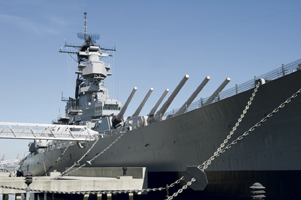Risk Management
Lessons learned from deadly crashes of Navy vessels
I have a great deal of respect for our men and women who serve in the military. What they do allows us the freedom to live our lives every day in peace, something we should never take for granted. I have a particular fondness for the Navy because my uncle, John Boss, served on the aircraft carrier Coral Sea during the Vietnam War. I was fascinated by the stories he told of his experiences on board while serving our country. He would describe what it was like to ride out a cyclone with 30-foot seas on a boat the length of a football field. The crew didn’t eat anything but crackers for two days as they battled the storm while working as a team to arm planes with missiles and get them safely on and off the vessel.
It’s the job of a leader to create both the conditions and a culture of safety whenever near misses and even minor incidents are reported and investigated … .
Serving in the Navy can be a dangerous business. During my uncle’s time at sea, a mishap occurred when an air-to-surface rocket accidentally ignited on board, injuring nine seamen. He told me this story years before we had the Internet, and when I recently searched for it online I discovered it happened on October 26, 1967. It was called the Zuni Rocket Mishap and resulted in four of his shipmates dying from their injuries. The incident occurred while crewmen were assembling the Zuni rocket, which was commonly used for Navy aircraft raids in Vietnam. The rocket motor ignited and shot forward about 20 feet into a steel bulkhead. Fortunately it did not explode, but the rocket fuel filled the room and burned the men. My uncle was asleep in his bunk next door, and he described how difficult it was to close the bulkhead doors with injured men inside to stop the spread of fire and save the ship.
Fast forward to 2017, and it’s apparent that the Navy needs to hit the risk management reset button because last summer it experienced two deadly crashes at sea. Seventeen sailors died on these modern ships, which are equipped with the most sophisticated radar known to man. In one incident, 10 sailors on deck, whose responsibility was to keep watch, didn’t realize what was happening until it was too late. Those charged with monitoring the radar and navigation systems missed it as well. When I heard about these tragic accidents, I wondered how they could have happened. Could this be yet another example of a risk management failure? The Chief of Naval Operations, Admiral John Richardson, said after the accidents: “We need to do better,was both of these accidents were preventable.”
Along with the loss of life, the fallout has been devastating, with the Navy firing officers and senior sailors from the ships involved. The cost to taxpayers to repair the vessels is estimated to be $600 million, along with the cost of deploying other ships to take over their duties.
The Navy published a detailed accident investigation report that stated the collisions were avoidable and indicated a need for the Navy to undertake a review of wider scope to identify the root causes.
After the investigations, the findings were the same in both incidents. The Navy said: “That collisions at sea are rare and the relative performance and fault of the vessels involved is an open admiralty law issue. The Navy is not concerned about the mistakes made by the ships that hit them. Instead, the Navy is focused on the performance of its ships and what we could have done differently to avoid these mishaps.”
In the Navy, the responsibility of the commanding officer for his or her ship is absolute. Many of the decisions that led to these incidents were the result of the commanding officers’ poor judgment and decision making. That said, no single person bears full responsibility for this incident. The crew was unprepared for the situation in which it found itself through a lack of preparation, ineffective command and control, and deficiencies in training and preparations for navigation.
Several lessons can be learned from these incidents that carry over to business risk management. Just because something hasn’t happened doesn’t mean it won’t happen. It’s critical to focus on the leading indicators of senior leadership involvement and employee training. It’s the job of a leader to create both the conditions and a culture of safety whenever near misses and even minor incidents are reported and investigated, thereby holding everyone accountable for his or her own safety as well as the safety of teammates. Strong leaders need to have courage and feel comfortable being out in front while everyone else is behind them. They need to take a stand and challenge the status quo. It’s not acceptable to wait to respond to a lagging indicator such as a serious accident with property damage and loss of life.
Admiral Richardson, testifying before the Senate Armed Services Committee, stated: “Catastrophic accidents like this are caused by a sequence of small incidents that accumulate over time.”
The small incidents he described were leading indicators that should have served as the canary in the coal mine, warning that a catastrophic event was just around the corner. I think this is good advice that we need to share with the business community we serve.
The author
Randy Boss, CRM, CRA, SHRM-SCP, is a Certified Risk Architect at Ottawa Kent in Jenison, Michigan. As a Risk Architect he designs, builds and implements risk management and insurance plans for middle market companies in the areas of human resources, property/casualty and benefits. He has 40 years of experience and has been at Ottawa Kent for 35 years. He is a lead instructor for the Institute of Benefit & Wellness Advisors, training agents in how to bring risk management to benefits, and co-founder of OSHAlogs.com, an OSHA compliance and injury management platform. You can reach Randy at rboss@ottawakent.






